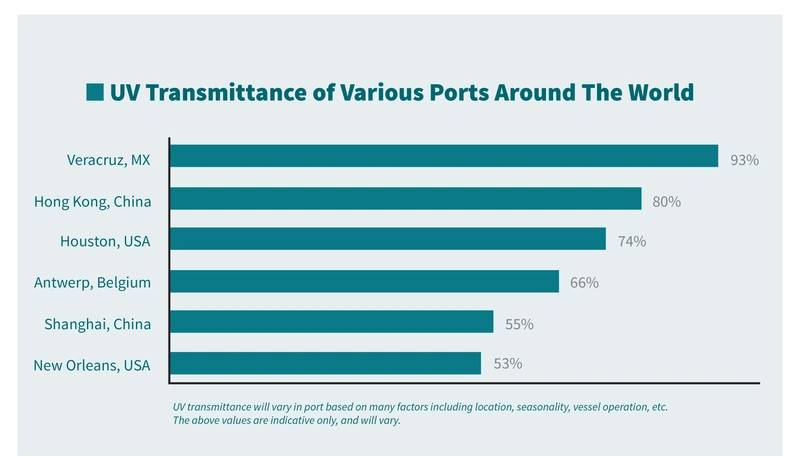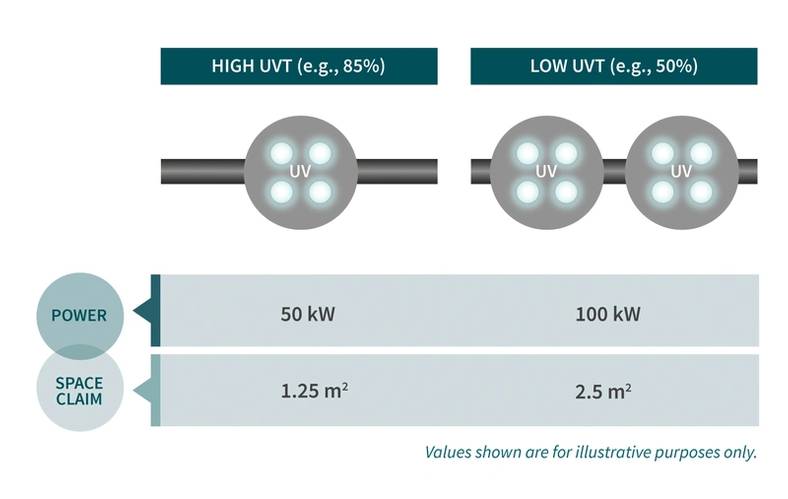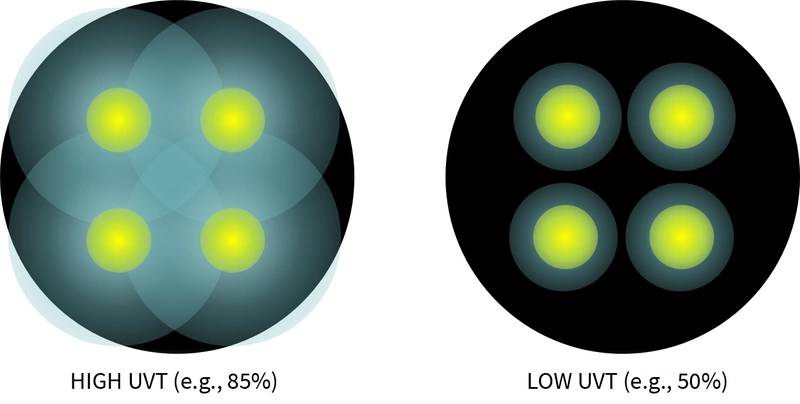UNDERSTANDING UV TRANSMITTANCE
There is a long track record of utilizing UV disinfection to treat wastewater, and, in most cases, wastewater is of poorer quality or lower UV transmittance (UVT) than ballast water. UV can treat extremely turbid ballast water, as long as the system is engineered to the highest of standards.
WHAT IS UVT?
UVT is the ratio of light entering the water to that exiting the water. Simply put, water with high UVT (e.g., 90%) is relatively clear, allowing more UV light to reach the organisms you are trying to treat. As water quality decreases, the UVT is reduced (e.g., 50%) which in turn reduces the amount of UV light that is able to penetrate and provide treatment.
A HIGH UVT VALUE LIMITS SYSTEM APPLICABILITY
Many existing IMO Type Approved systems have been tested in higher clarity water (high UVT). It is expected that these systems will not be approved to treat lower clarity waters than to what they have been tested to under USCG regulations. More equipment would be required to provide the same level of performance, and more equipment means increased power draw and space requirements.
EVERY PORT IS DIFFERENT
No matter where in the world your vessels trade – whether it’s clear marine water or murky fresh water – your ballast water treatment system has to work. And, as you know, water quality varies from port to port and day to day. Different water quality parameters become more or less important depending on the type of ballast water technology used. In the case of Electrochlorination systems, the salinity, temperature and organic content of the water will have a dramatic impact on the overall efficacy of the system. For UV systems, UVT is the most important parameter impacting the effectiveness of the system.
The UVT value will be noted on the Type Approval certificate, significantly limiting the applicability of the system in poorer water qualities. In addition, alarms will be noted in equipment logs every time the UVT value of the ballast water falls below the minimum to which it was tested. Multiple alarms are likely to draw increased attention from Port State Control. The best way to reduce your risk is to utilize a ballast water treatment system that has been tested to low UVT values.
For more information please visit www.trojanmarinex.com













